Pelophylax lessonae
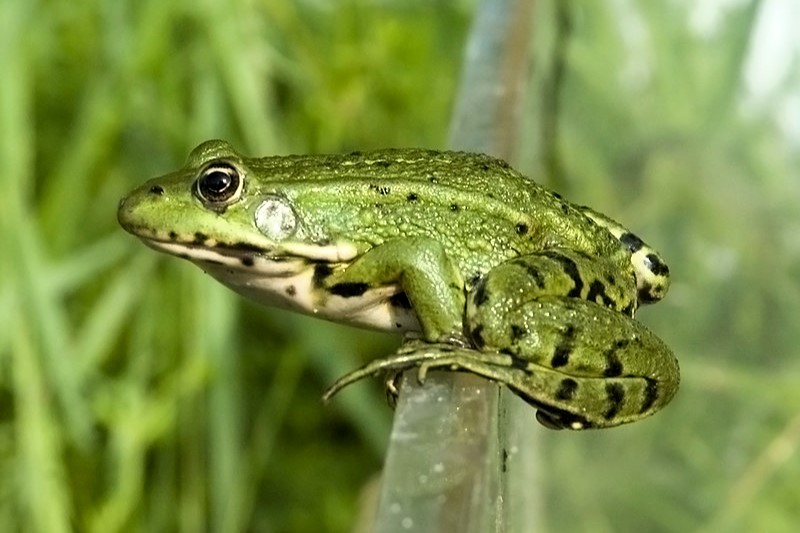

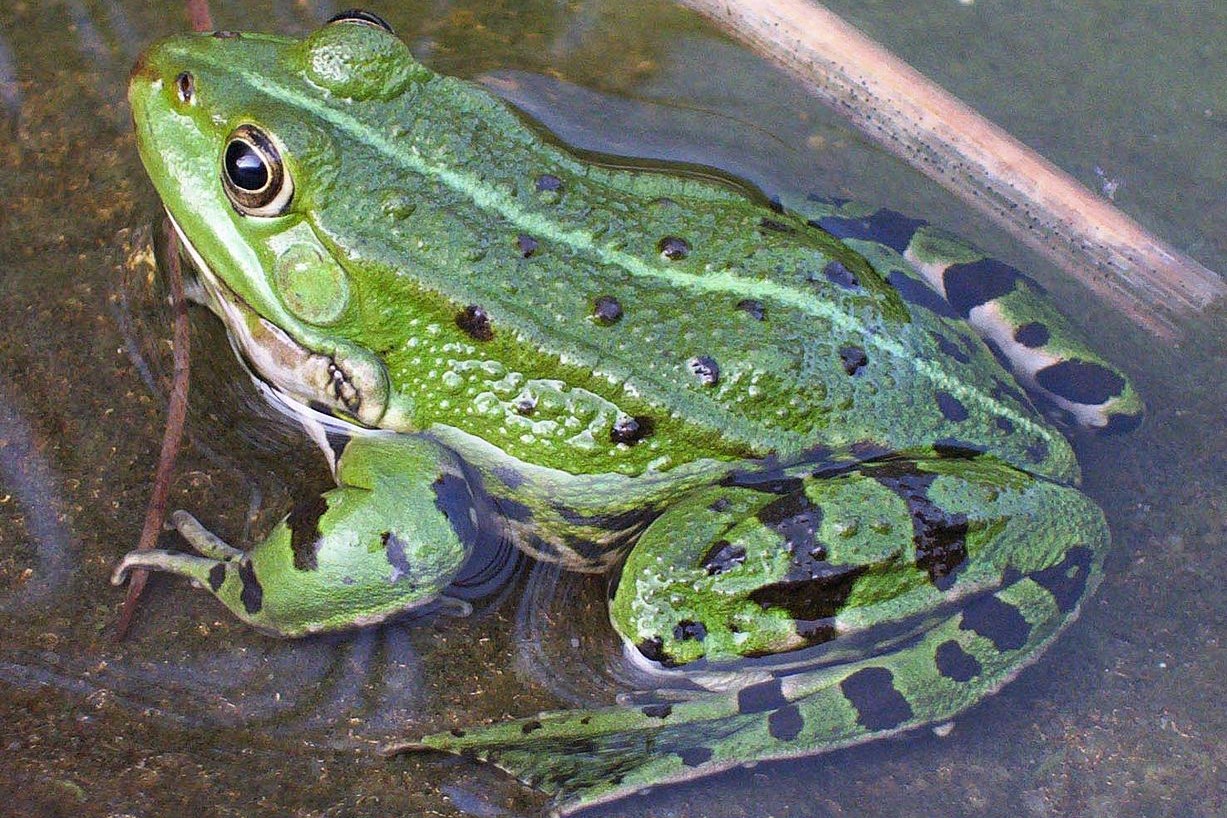
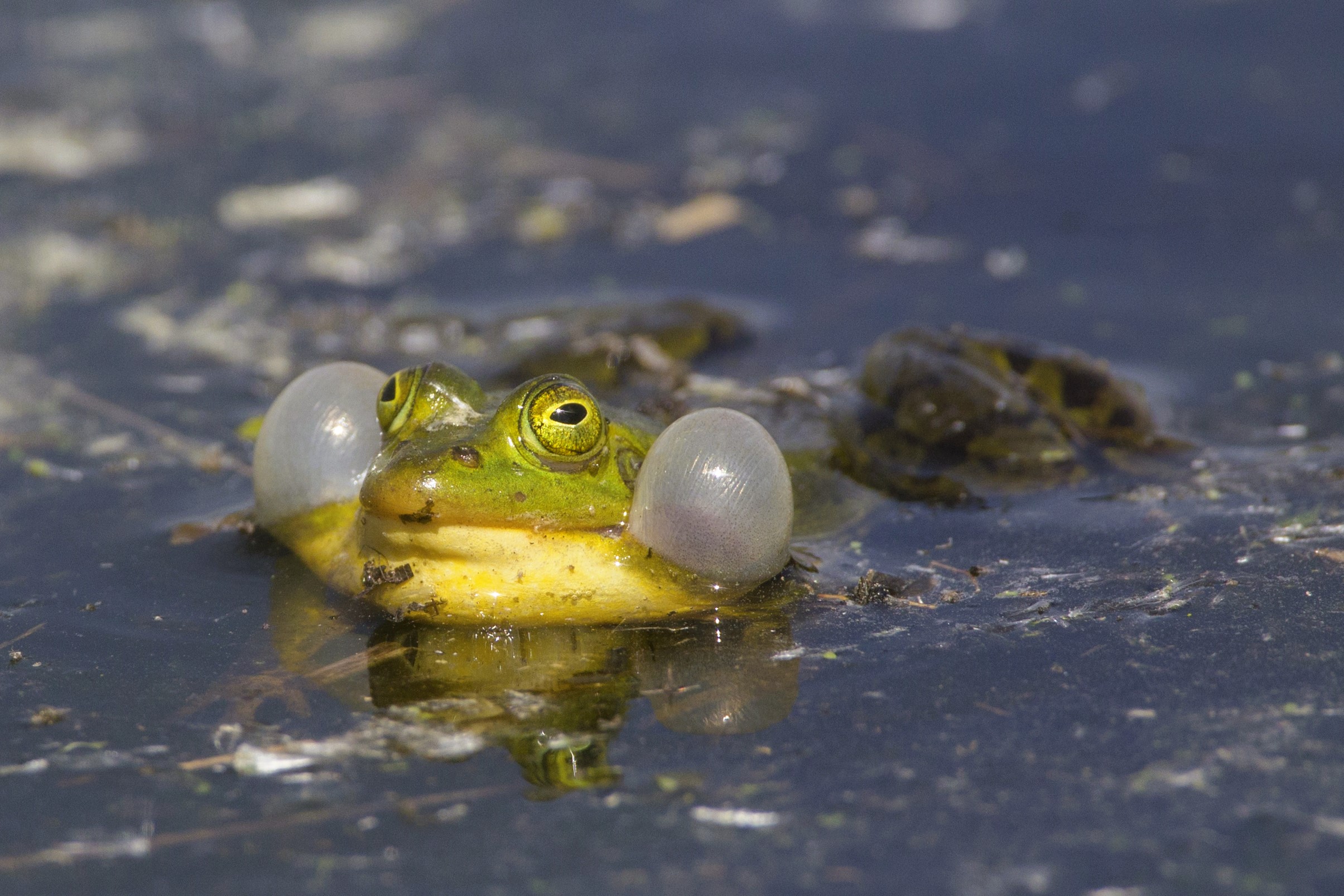
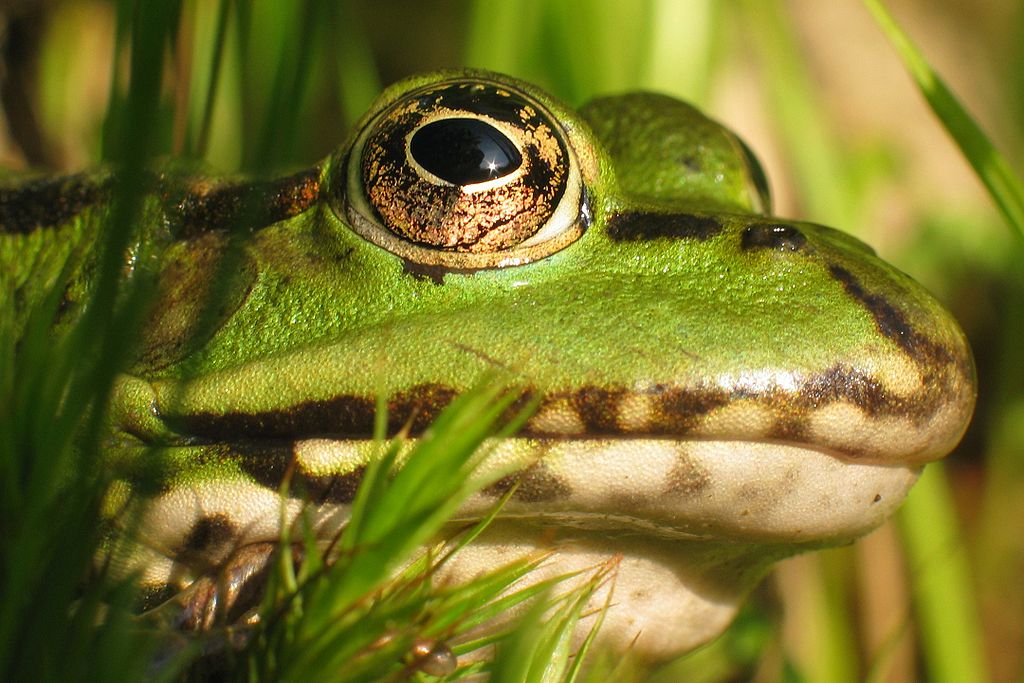
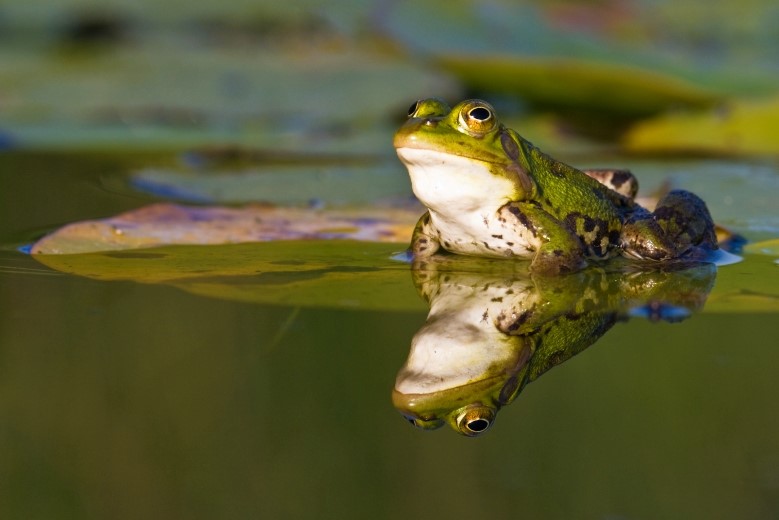
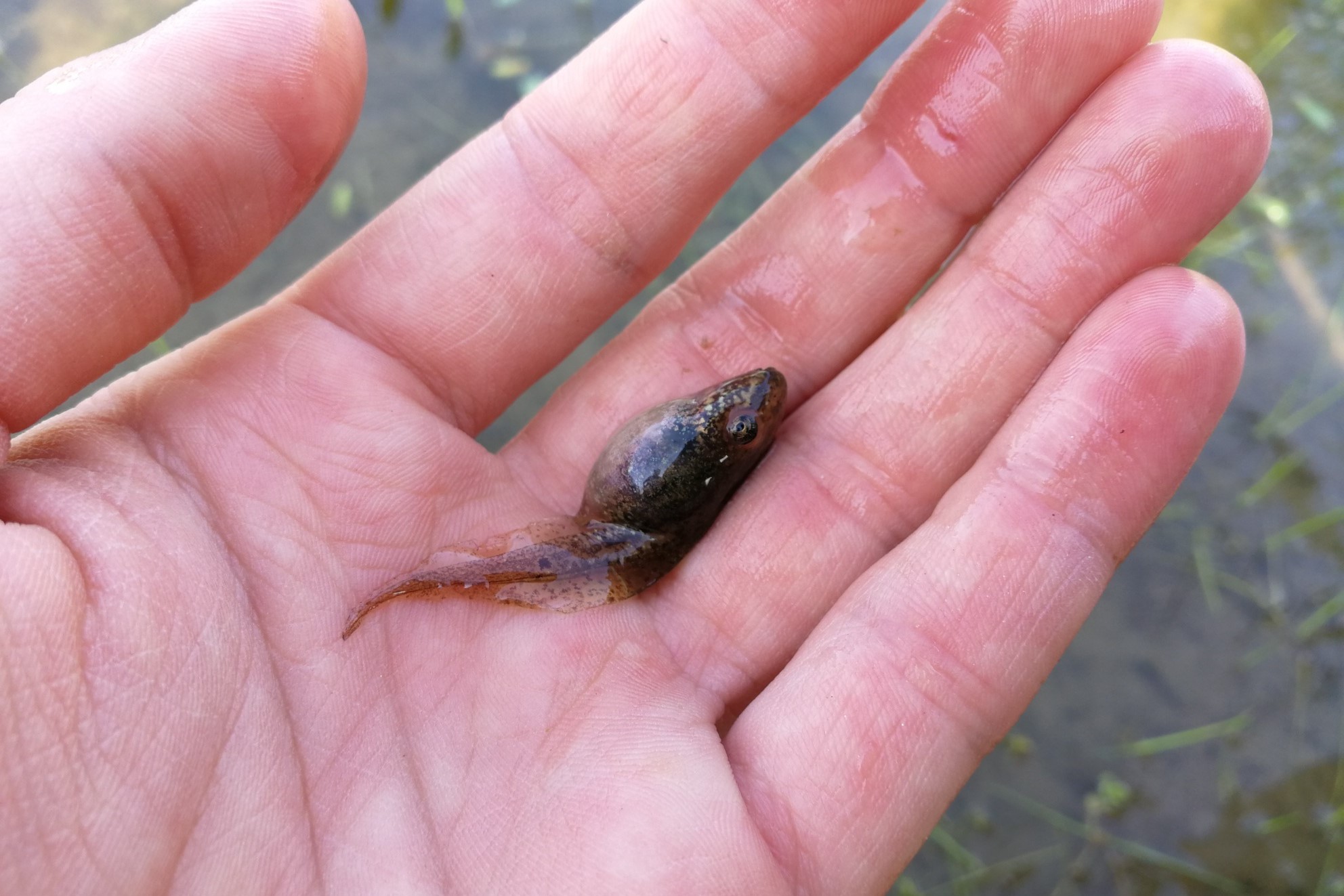
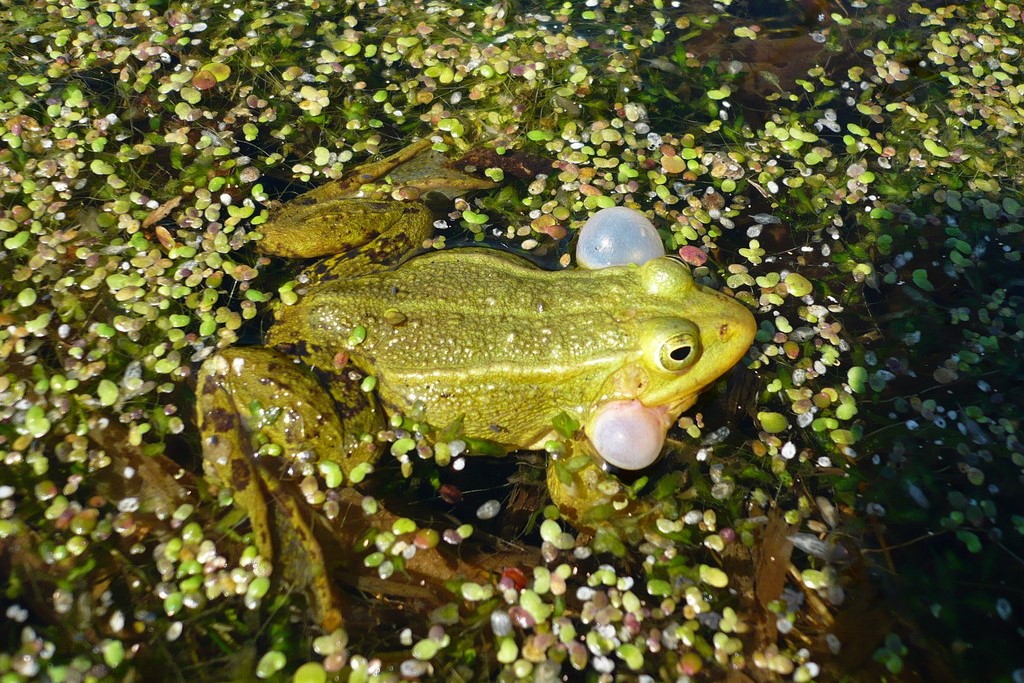
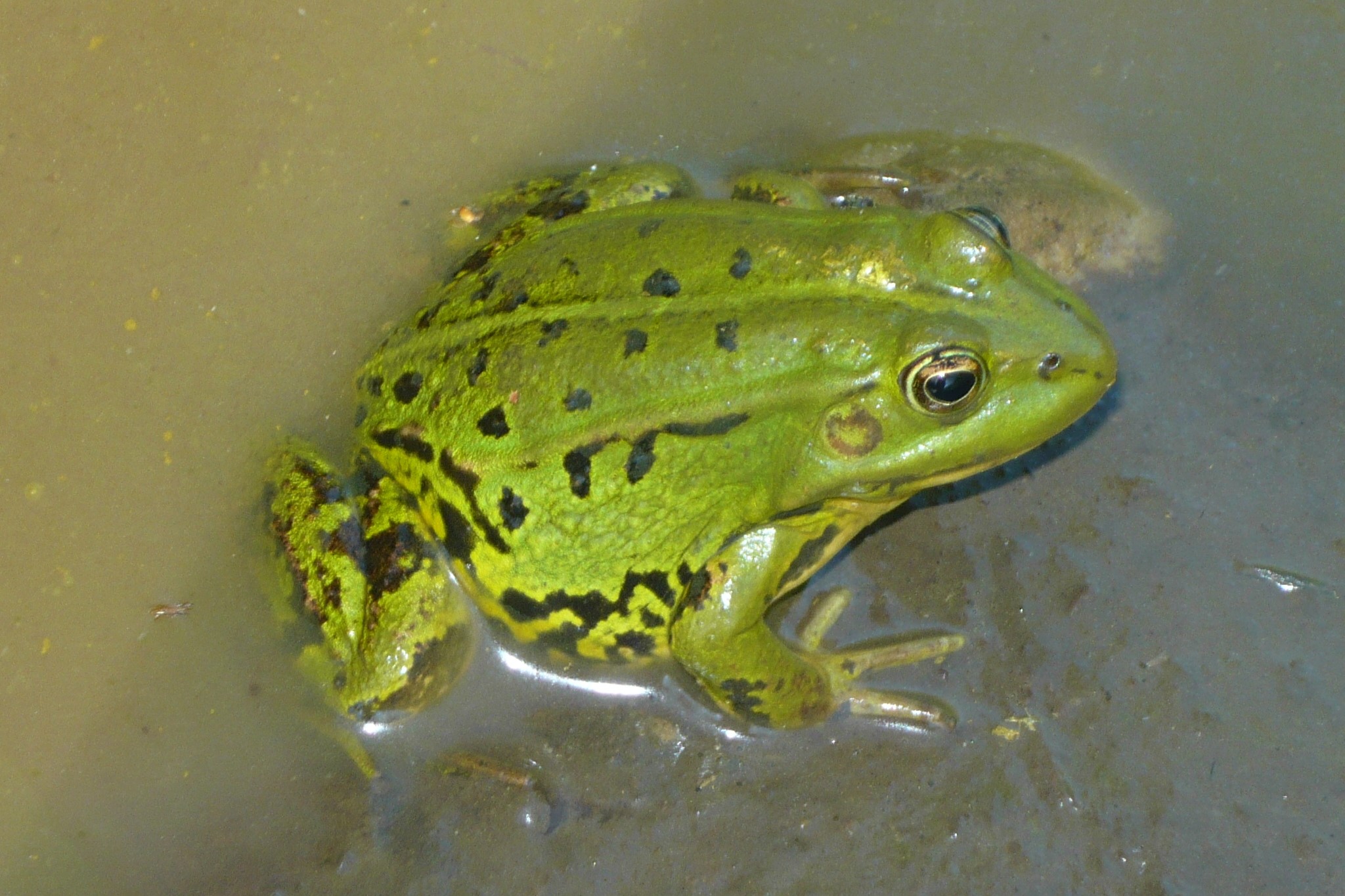
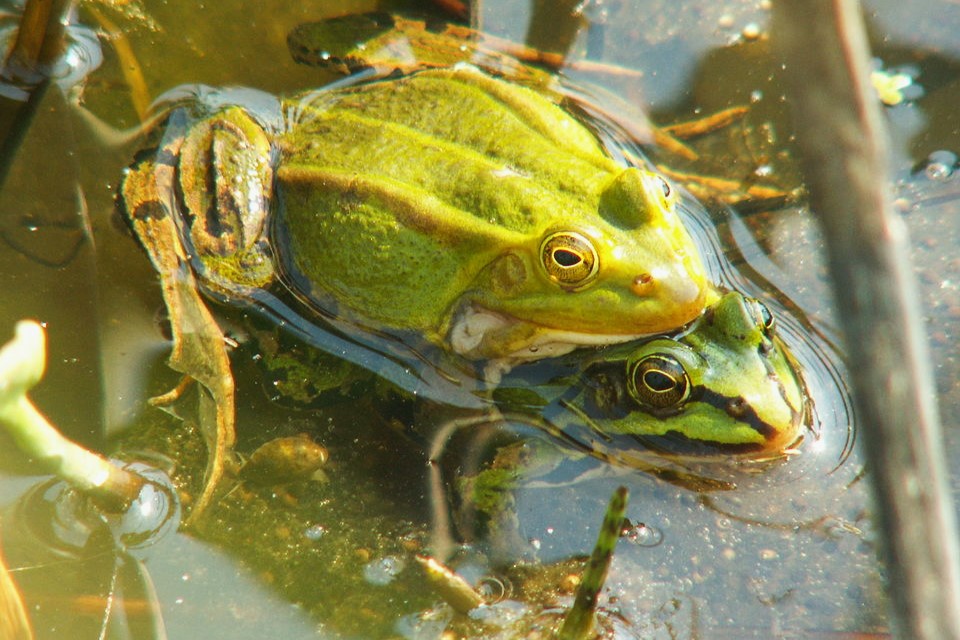
Amphibia → Anura → Ranidae → Pelophylax → Pelophylax lessonae
Rana vërde picina
Lessona's Frog ( Pelophylax lessonae ) is one of the most elegant members of the green frog group, easily recognized by its medium-small size and bright dorsal coloration, ranging from vivid green to greenish-brown, almost always adorned with small dark spots.
Males display characteristic external vocal sacs that are white, clearly visible during the breeding season.
Females attain slightly larger sizes (up to 2.8 in (7 cm)), while males rarely exceed 2.6 in (6.5 cm).
Sexual dimorphism is also seen in the dark gray nuptial pads on the males’ thumbs and in the greater robustness of the forelimbs, typical signs preparing for mating.
At birth, tadpoles measure about 0.24–0.28 in (6–7 mm), have a brownish color with faint golden spots, and undergo development that, in favorable conditions, is completed in about three months.
In western Liguria, Lessona's Frog is distributed in a fragmented manner, finding refuge mainly in the remaining wetlands of the lowlands and foothills, from sea level up to about 1,640 ft (500 m) in elevation.
The species is absent from the inner mountainous areas and often shows isolated populations, very sensitive to environmental changes.
In western Liguria, the presence of the species is an important indicator of the environmental quality of aquatic systems and coastal valleys, where it survives despite the ongoing loss of suitable habitats.
It prefers aquatic environments rich in submerged and riparian vegetation: permanent ponds, slow-moving canals, pools, small lakes, and coastal freshwater wetlands are its preferred areas.
It is often observed in now rare marshy areas, where thick reeds and a dense plant cover favor reproduction and the persistence of tadpoles.
Its habitat choice demonstrates the species' high sensitivity to water regime changes and water quality.
Lessona's Frog is active both day and night, peaking during twilight hours, when adult males emit characteristic calls that can be heard at considerable distances.
The winter dormancy period generally extends from November to February–March, varying according to altitude and local climate: during this period, animals take refuge in mud or among vegetation near water bodies.
Breeding takes place between April and June; after mating, females lay from 800 to 2,000 eggs in gelatinous masses that adhere to submerged vegetation, ensuring oxygenation and protection for the embryos.
An opportunistic species, Lessona's Frog feeds mainly on aquatic and terrestrial insects, supplementing its diet with small crustaceans, mollusks, and, more rarely, small vertebrates.
The tadpoles are herbivorous and microphagous, preferring algae, plant detritus, and tiny invertebrates found among submerged vegetation.
Thanks to this dietary versatility, the species manages to survive even during periods of food scarcity and adapt to different microenvironments.
The main threats to Lessona's Frog in Liguria are the ongoing destruction, fragmentation, and degradation of aquatic habitats, chemical water pollution (pesticides and agricultural runoff), introduction of predatory fish, and competition with other green frog species.
Alterations in water regimes and the spread of emerging diseases (fungal illnesses) also contribute to seriously endangering the survival of residual populations.
Lessona's Frog is particularly interesting for its participation in a complex natural hybridization system with other green frogs (e.g., Pelophylax kl. esculentus ), a phenomenon making its evolutionary history and population dynamics unique.
The males' call, clear and distinctive, is an effective species-specific recognition signal.
It shows marked fidelity to traditional breeding locations and a pronounced dependence on aquatic environments compared to other related species.
In western Liguria, it is the subject of constant monitoring to assess population integrity and ecological relationships with other green frog species.
Its conservation strictly depends on the protection and restoration of residual wetlands and maintenance of clean water; active management measures are now essential given its progressive decline in recent decades due to profound environmental changes.